This story was originally published by Hakai Magazine and appears here as part of the Climate Desk collaboration.
Every couple of weeks, postdoctoral researcher Yosuke Yamada grabs a bucket and makes the short drive from his lab at Okinawa Institute of Science and Technology to one of the nearby ports on the southerly Japanese island of the same name. He passes Okinawa’s iconic beaches, where snorkelers visit clownfish and coral reefs, and continues to the fishing wharfs. After Yamada scoops a bucketful of water from between the boats, he heads back to his lab to study components of the island’s ecosystem that are so small they must be observed using a microscope: bacteria, viruses, algae, and fungi — the ocean’s microbes.
At the lab, Yamada transfers the tiny organisms to an atomic force microscope. Unlike many microscopes, this one passes a minute probe over the surface of the sample. By measuring how the sample responds when the probe pushes against it, Yamada can measure the size, shape, and stickiness of dead and live microbes in his water sample. Among the questions Yamada hopes to answer is a seemingly simple — but complex and critical — query: what makes microbes sink?
All ocean organisms, from whales to bacteria, are made largely of carbon. Some of this carbon is released when organisms respire. But when ocean organisms or their waste ends up in the depths of the ocean, the carbon they’re made from gets cut off from the atmospheric pool that insulates and warms the Earth. Scientists call this process the biological carbon pump, and the drivers of the pump are the ocean’s microbes.
The pumping starts when photosynthetic phytoplankton — a group of plentiful microbes in the upper levels of the ocean — grow and reproduce using atmospheric carbon dioxide that’s dissolved in the water. Each year, these microbes capture about 50 billion tonnes of carbon via photosynthesis — as much as land plants capture. Once carbon has been incorporated into a living organism, it can embark on a downward journey in a process called carbon export. Sometimes, the trip is direct: dead microbes and conglomerates of live microbes settle to the lower reaches of the ocean. Other times, it’s indirect: animals such as fish and whales ingest microbes through the food chain, so the microbes’ carbon stays in the food chain until those animals die, poop, or slough off skin or scales, sending detritus downward.
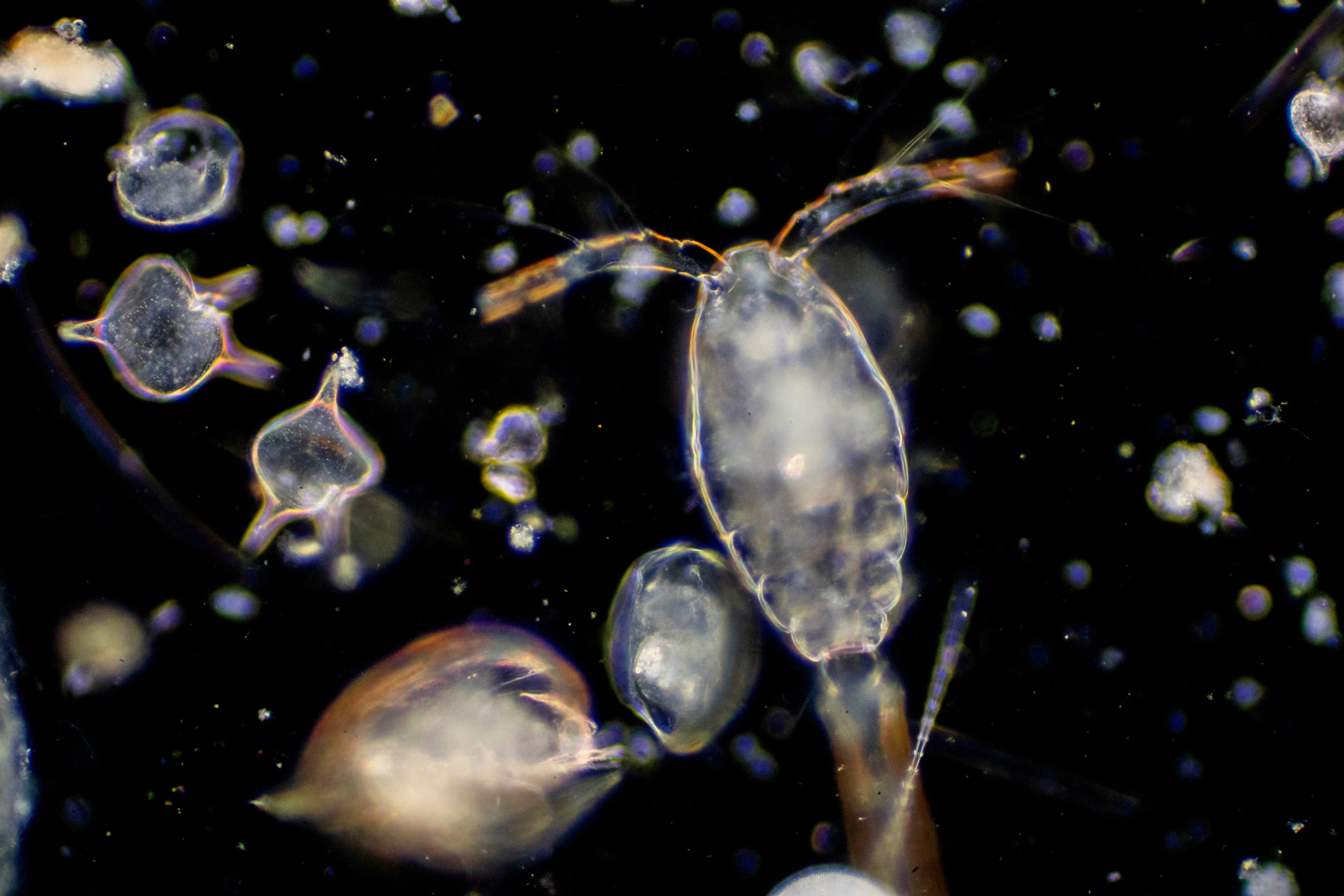
Scientists have studied the biological carbon pump for decades, but they’re just starting to understand how much carbon it exports, which of the microbes and animals play the biggest roles, and what determines whether carbon-rich particles remain in the food web or get locked away in the depths of the ocean. Major questions remain, such as how the biological carbon pump will change as the planet warms. Despite the uncertainty, the predicted consequences of climate change are so dire that some scientists and policymakers have suggested harnessing the pump to temper climate change’s harshest effects. But even if scientists can learn to manipulate the pump and boost a fundamental natural process, are the benefits worth the risks?
It’s perhaps unexpected that a Parisian butcher shop turned clothing store would feature in the quest to understand carbon export. When French fashion designer agnès b. opened her first shop in 1975, just a few blocks from the Louvre, she probably didn’t anticipate eventually using the proceeds from her clothing line to fund one of the most expansive scientific expeditions of all time. But in 2003, years after she’d met with success, the designer and her son Étienne Bourgois purchased a schooner that they named the Tara. Inspired by agnès’s father’s passion for sailing, the pair encouraged scientists to use the boat to study and learn to conserve the environment they so adored.
From 2009 to 2013, the Tara traversed the globe, tracing the shores of the Pacific, passing the tip of South America, crossing the Atlantic, and sailing through the Suez Canal. Along the way, the scientists aboard sampled the ocean’s microbes, and they also studied how fast those microbes sank.
“The uniqueness of Tara, first, is the scale at which the studies were done,” says Lee Karp-Boss, a phytoplankton ecologist from the University of Maine. Ocean researchers often find themselves relying on fragmented data collected by many different groups in many different places. The Tara provided a data set that tied together global measurements, letting scientists start to get a fuller picture of how the oceans work.
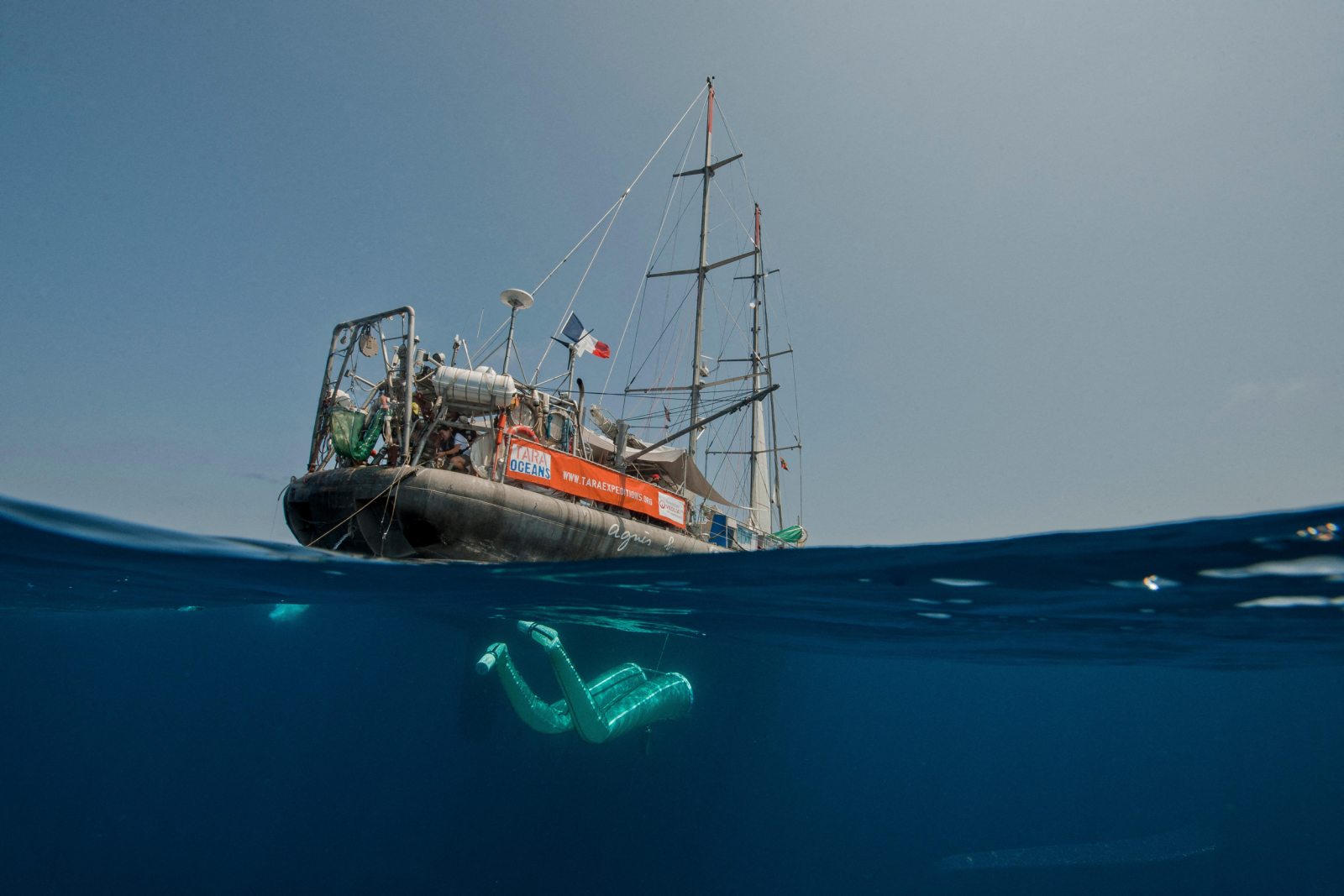
The survey was worldwide and down to 1,000 metres, adds Emmanuel Boss, husband to Karp-Boss and also a University of Maine professor, describing one of Tara’s recent missions. He and Karp-Boss have both served as research co-ordinators for Tara projects.
A 2016 publication drew on the expedition’s worldwide data to describe microbes that help carbon traverse the kilometres between the ocean’s surface and the seafloor. By suspending a camera in the water column, the researchers recorded carbon-rich particles — conglomerates of dead and live microbes, poop from larger organisms, and other bits of detritus — drifting downward. Image analysis software helped the scientists calculate the rate at which carbon was falling through the ocean. Correlating this information with microbial species present gave the researchers an idea of which organisms bear the most responsibility for sending carbon downward.
Karp-Boss says this study was pivotal for scientists studying carbon export because it was the first time they’d linked the kinds of microbes living in different parts of the ocean to the rate at which carbon was exported, a process that’s referred to as the “flux” of carbon from the top to the bottom of the ocean. In many cases, the data confirmed what scientists expected. For instance, microbes with hard exoskeletons or silicate shells are dense, so they settle quickly after they die. The prevalence of these organisms correlated with carbon export, but the Tara also came back to port with some surprises.
“Viruses, actually, were the best predictors in this statistical model for carbon flux,” says Jennifer Brum, a professor of oceanography and coastal sciences at Louisiana State University and one of the scientists who analyzed the Tara expedition data. Viruses are best known for the diseases they cause, from colds to COVID-19 to AIDS, but natural ecosystems teem with viruses, most of which infect other microbes instead of humans.
In fact, Brum says that if you fill your mouth with seawater, you’re taking in about 200 million individual viruses. “None of them care about you,” Brum says. “They are instead infecting the 20 million bacteria that are in your mouth.” Although each virus is so small that it can’t even be seen with a typical light microscope, the weight of the carbon in all the ocean’s viruses combined is more than one million times the weight of an empty Boeing 747 airplane.
Before the Tara, the conventional wisdom was that microbes killed by viruses disintegrated into tiny particles that stayed suspended in the water column until they were eaten by other organisms. So Brum and other virologists were surprised to see lots of visible carbon-rich particles drifting downward in areas where the water samples also showed a prevalence of certain viruses. But then Brum thought of pictures she’d seen of cells burst open by viruses. All those microbial guts could get pretty sticky.
Since the Tara mission, other scientists, including Yamada, have tested whether microbial death by viruses creates sticky cell debris that clumps and carries carbon downward. In one of his early experiments, Yamada mixed together diatoms, a type of phytoplankton, with the viruses that infect them. Instead of disintegrating, diatoms killed by the viruses stuck together and formed large flakes that sank quickly — exactly as one might expect sticky cell debris to do.
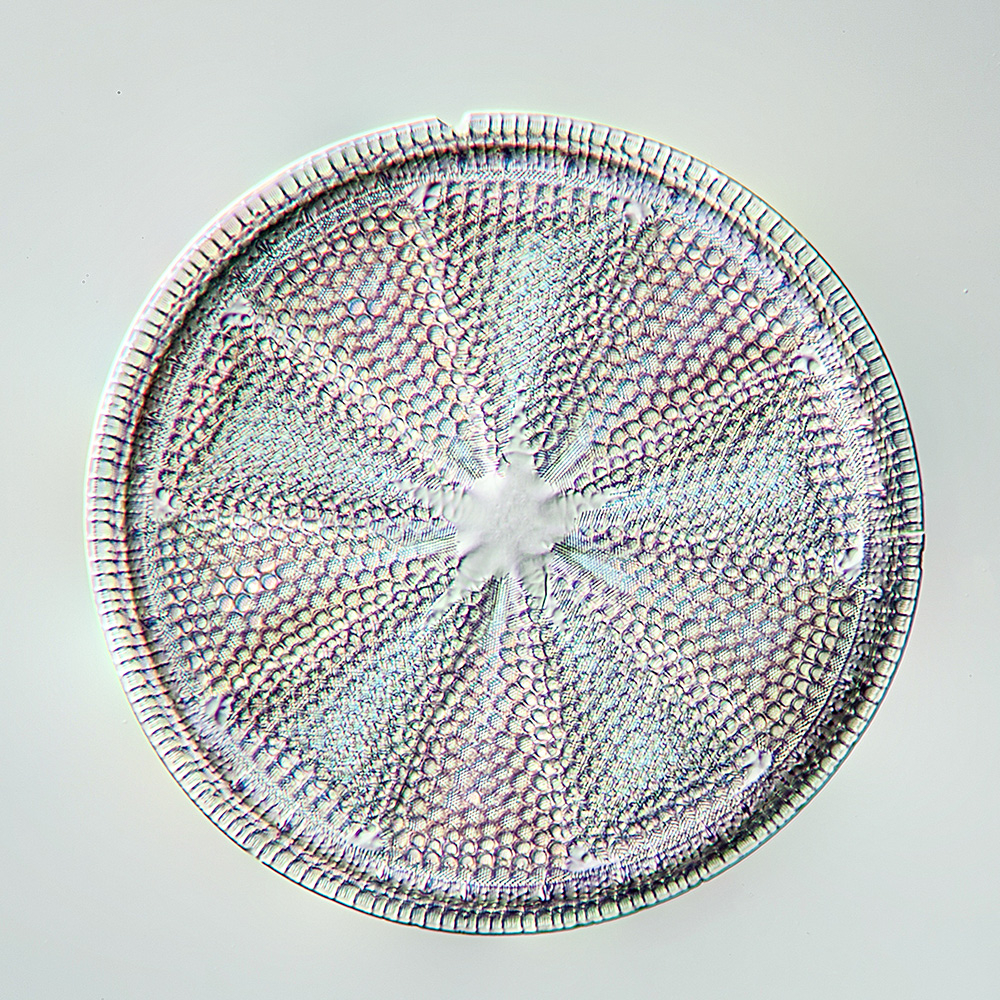
Scientists have long known that there’s a relationship between the size of a particle and how fast it sinks. “Two times larger particle has four times higher sinking speed,” Yamada says. In the wake of the 2009-13 Tara expedition, this law of physics took on renewed importance for ocean microbiologists. Over a decade earlier, Dutch scientist Markus Weinbauer noted in a synopsis of knowledge about microbe-infecting viruses that the sticky deaths they cause seemed to be a factor in carbon export. Now, scientists have a name for the way viruses fast-track carbon to the bottom of the ocean: the viral shuttle.
With thousands of unique viruses in the ocean, which ones are driving the shuttle? The Tara mission found that a number of viruses — both previously known and uncharacterized — correlate particularly strongly with carbon export, and more recent work has found that viruses that infect plankton with hard exteriors are also very important. There may be many more viruses with a flair for carbon export, but Ohio State University research scientist Ahmed Zayed, who studies the ocean’s viral composition, says that even knowing which viruses are out there is a challenge.
He explains the problem by dividing viruses into two categories that scientists colloquially call illuminated viral matter and viral dark matter. To suss out new viruses, scientists can compare genetic sequences found in water samples, which could be from new viruses, to genes they’ve seen in other viruses — the illuminated viral matter. The problem is, about 99 per cent of the viral genomes that scientists fish out of the ocean look unlike anything they have ever sequenced before — the viral dark matter.
“The more we discover viruses, the databases are going to grow,” Zayed says. “That would help us, again, discover more and more of this dark matter.”
Gaining a complete picture of the types of viruses found in the ocean will help scientists learn which viruses promote carbon export, but a larger question looms on the horizon: how will warming and acidifying the oceans affect the biological carbon pump? When I asked scientists how climate change will affect the ability of ocean microbes to export carbon, they responded, “we don’t know” in about as many ways as possible.
“That’s a really cool question, but really hard to answer,” Zayed says when asked about ocean viruses specifically. “Of course, there’ll be an impact, but it’s too early to talk about anything like that.”
The effects of climate change on phytoplankton — one of the major categories of microbes that viruses kill — are expected to vary by latitude, Karp-Boss says. Phytoplankton abundance is predicted to increase near the poles, where these microbes are already prevalent, and decrease near the equator, and changes in carbon export may initially mirror these changes. “We are still, as a community, working really hard to be able to quantify those fluxes,” she says. “So we’ll be able to really predict it on a global scale.”
But finding the answer is challenging in an environment as vast and varied as the ocean. “You can come up with scenarios in any direction you want,” Emmanuel Boss says. He explains that because scientists don’t fully understand how material flows through ocean food webs, “a lot of our theories about the ocean are, at best, slightly wrong and, at worst, significantly wrong.”
Cutting carbon emissions is essential for curtailing climate change, and low-tech interventions can also help. Limiting fishing, for example, can keep the carbon within fish in the ocean and out of the atmosphere. But some researchers and policymakers are wondering if there’s a way to nudge the biological carbon pump to pump even faster. Recently, the National Academies of Sciences, Engineering, and Medicine gathered an interdisciplinary committee of scientists to assess the feasibility of altering the oceans to enhance carbon export.
“There’s increasing interest from businesses [and] entrepreneurs in carbon dioxide removal,” Scott Doney, an oceanographer from the University of Virginia and chair of the committee, said during a seminar describing the committee’s recent report. The committee’s work could help turn this interest into action, but altering the way the oceans work is also worrisome. While enhancing carbon export could help ameliorate climate change, it could also create new problems.
Using iron to stimulate phytoplankton blooms, for example, could boost carbon export. But when phytoplankton blooms decay, their microbial decomposers may deplete oxygen levels in the lower reaches of the water, potentially harming other organisms. Scientists have also pointed to “nutrient robbing,” or the propensity of phytoplankton blooms to monopolize nutrient resources, as a reason to be wary of iron fertilization. With fewer nutrients available for other organisms to use, the regions of the ocean that export carbon may simply shift geographically rather than see an increase in overall carbon export.
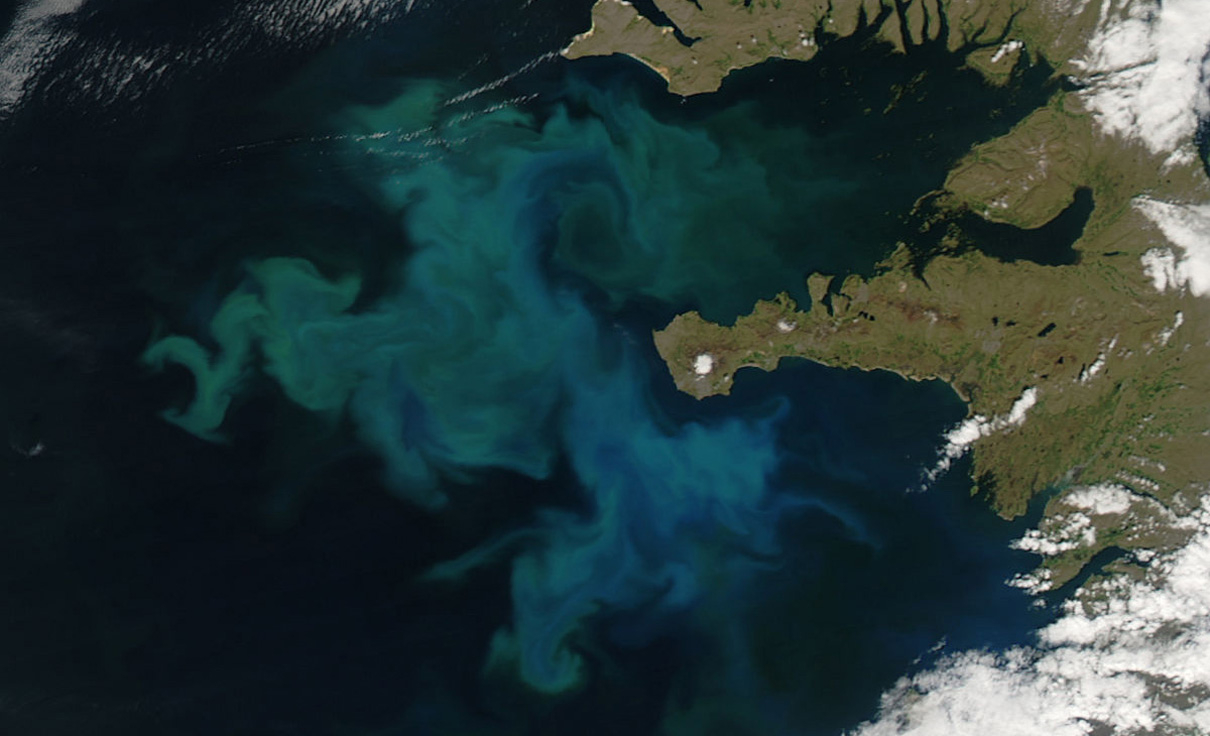
Churning the oceans to bring up nutrients from lower levels could be another way to stimulate microbial growth in the upper layers and, therefore, increase the carbon exported from them. Some tests have shown that human-induced ocean upwelling can triple the amount of phytoplankton in a local area, but other test results have been less impressive. In addition to the uncertainty over this strategy’s efficacy, some scientists have estimated that a widespread system consisting of millions of pumps — a huge logistical challenge — would be necessary for upwelling to have a substantial impact on carbon export. Add to this the problem that no one is sure what side effects these upwelling sites would have for ocean ecosystems, and this solution seems less appealing.
David Siegel, an oceanographer at the University of California, Santa Barbara, and an author on the recent National Academies report, says that all of the ways scientists propose manipulating the biological carbon pump are “awful.” “Anything that we’re doing to purposely change the ecology and the physics of the way the oceans work will have negative repercussions. There’s no way around that,” he says.
But as Earth becomes a little hotter every year, we may be forced to try one of these awful options. “Something has to happen or we have to adjust to a planet that’s just a whole heck of a lot warmer than it is now,” Siegel says. “We have to understand the consequences of said actions. And we have to do it quickly.”
For the last two years, “quickly” has also been a mantra for scientists studying a certain land-based microbe that’s been bedeviling society. Microbiologists have raced to save us from the most pressing microbe in our lives — the SARS-CoV-2 virus.
But when COVID-19 has faded, we’ll still be facing the ever-growing threat of climate change, and the question will be, can viruses and other microbes at sea now offer redemption? Or will attempts to manipulate the carbon pump create as many problems as they solve?

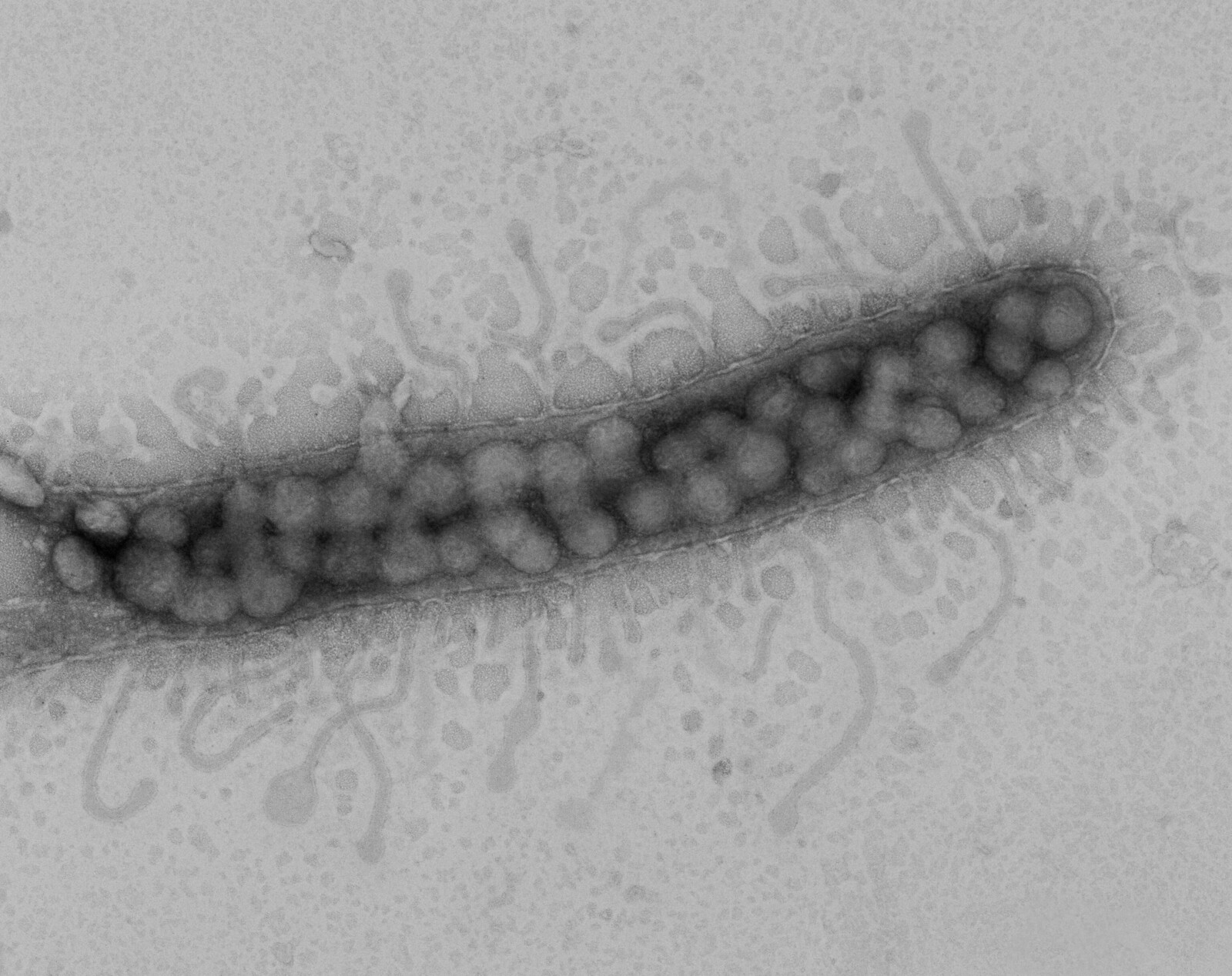



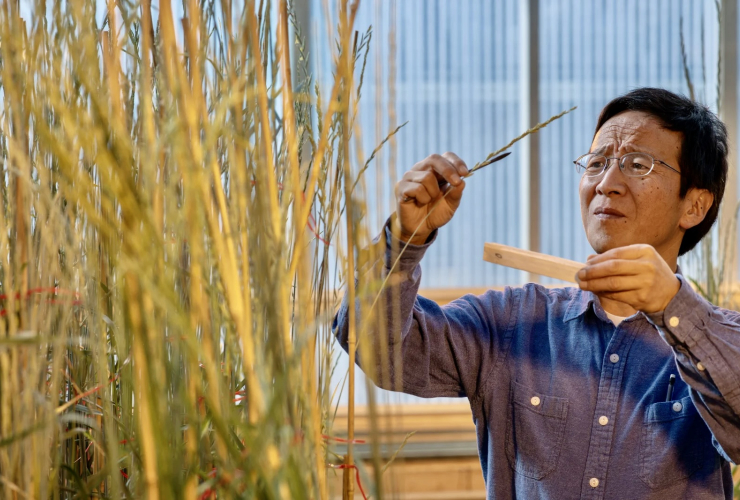
Comments